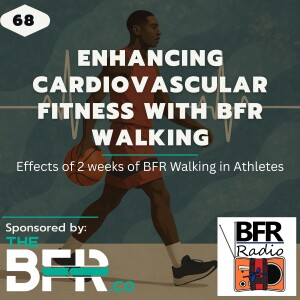Episodes

Monday May 12, 2025
Enhancing Cardiovascular Fitness with 2 Weeks of BFR Walking in Athletes
Monday May 12, 2025
Monday May 12, 2025
In this episode of BFR Radio, we explore a fascinating training study that challenges conventional thinking around aerobic development. Can low-speed walking combined with blood flow restriction (BFR) significantly improve endurance capacity — even in already trained athletes?
We dive into the research by Park et al., where trained male basketball players performed just two weeks of low-intensity BFR walking. The results? Remarkable improvements in VO₂max, cardiovascular efficiency, and ventilatory capacity — all without high training loads.
Whether you're a coach, rehab specialist, or athlete, this episode offers a compelling case for using BFR walking as a low-impact, time-efficient, and performance-enhancing conditioning tool.
🔍 In This Episode, You’ll Learn:
-
📚 Background and context from early BFR-walking studies (Abe et al., 2006)
-
🏋️♂️ Full breakdown of the Park et al. protocol, including pressures, session structure, and frequency
-
📈 The surprising physiological adaptations observed in just 14 days
-
💡 Practical applications: from rehab to in-season support and off-season recovery
-
🧠 How to integrate BFR walking into a real-world weekly training program
💡 Key Takeaways:
-
VO₂max increased by 11.6% in just two weeks
-
Stroke volume ↑ 21.4%, heart rate ↓ ~13%
-
Excellent option for injured, in-season, or travelling athletes
-
Can be programmed in short, low-stress sessions (e.g., 15–20 mins)
🧰 Resources & Links:
-
Visit: www.thebfr.co to learn more or purchase your own BFR cuffs
-
Follow us on Instagram: @thebfr.co
-
Contact Chris via the website or DM for programming support
-
Listen to our previous BFR + aerobic training episodes in the podcast archive


No comments yet. Be the first to say something!